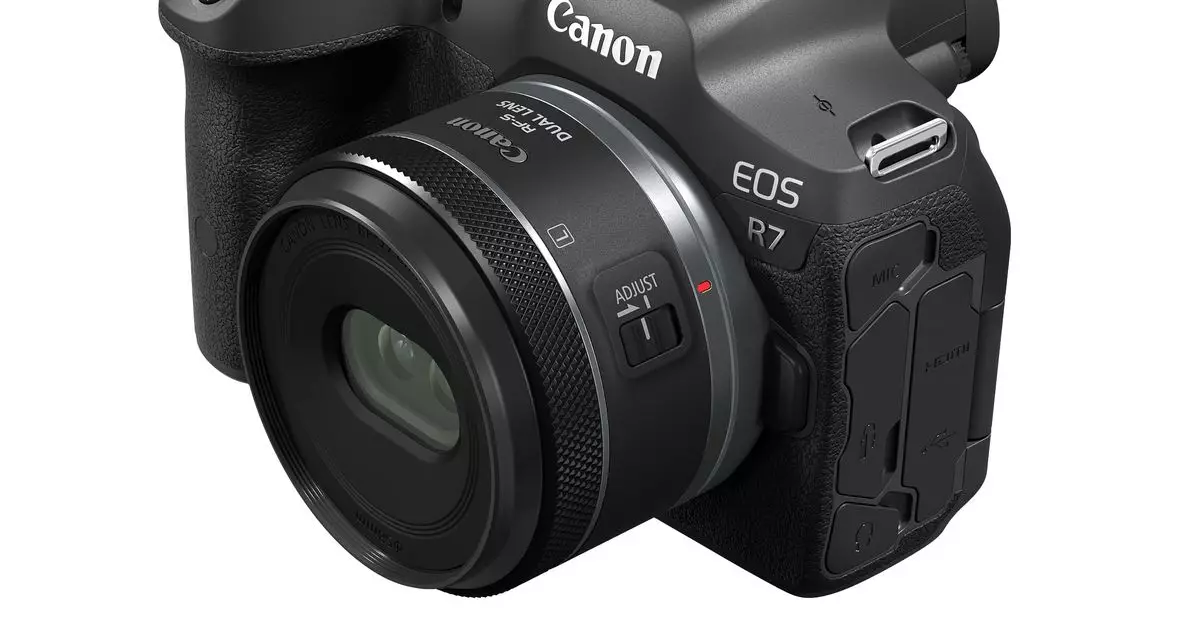In the fast-evolving world of digital photography and videography, Canon has made significant strides with the unveiling of its latest lens: the RF-S7.8mm F4 STM Dual. This announcement not only showcases Canon’s commitment to innovation but also reflects the growing demand for 3D content creation tools as augmented and virtual reality technologies gain traction. This article provides an in-depth exploration of the new lens, its features, and its potential impact on creators and the industry at large.
The RF-S7.8mm F4 STM Dual lens has been designed with affordability in mind, offering creators a more accessible entry point into the realm of 3D video production. Teased during the 2024 Apple WWDC keynote, the lens is intended to complement the Canon EOS R7 camera, aiming to provide an effective solution for those looking to create immersive VR content for headsets such as Meta Quest 3 and Apple Vision Pro. At an estimated price of $449.99, it stands in stark contrast to Canon’s existing dual-lens offerings, which can range significantly in price, reaching into the high thousands.
For content creators often working with budget constraints, this new addition provides a viable option without compromising on essential performance features. The kit—including the lens and the EOS R7—totaling over $1,700, remains a competitive offering considering its price position relative to higher-end models that can cost nearly $6,300 when paired with suitable camera gear.
One of the striking features of the RF-S7.8mm F4 STM Dual lens is its aperture range from f/4.0 to f/16, which supports autofocus—a crucial consideration for those who prioritize ease of use in their shooting endeavors. Additionally, the lens integrates a control wheel and a dedicated button for manual focus adjustments. This design gives creators the flexibility to fine-tune their focus for different subjects and distances, enhancing their overall shooting experience.
However, the lens does come with certain limitations that potential buyers should weigh. Its narrower field of view—63 degrees compared to the 180 degrees offered by Canon’s higher-end lenses—means the RF-S7.8mm lens is not a one-size-fits-all solution for every 3D application. This limitation becomes particularly significant when considering the type of subjects creators wish to capture. Optimal 3D effects are most pronounced at closer distances, rendering it less versatile for broader shooting scenarios where expansive landscapes or large subjects come into play. This trade-off between price and performance will undoubtedly influence purchasing decisions for prospective buyers.
An equally important aspect to consider when utilizing the RF-S7.8mm lens is the post-production requirements. The capture process doesn’t end once footage is shot; it must be processed through specialized software tools such as Canon’s EOS VR Utility or the EOS VR plugin for Adobe Premiere Pro. These tools, while powerful for generating 180-degree 3D content, come with a subscription fee, which adds another layer of cost to content creators who may already feel a financial pinch.
Moreover, understanding how to leverage these tools effectively can require an investment of time and technical knowledge, presenting a barrier for novice users— a factor that Canon might need to address through educational resources and support for those new to 3D content creation.
As Canon continues to push the boundaries of photography with products like the RF-S7.8mm F4 STM Dual lens, it highlights the increasing relevance of 3D capabilities in today’s digital landscape. For both seasoned professionals and aspiring creators, this affordable lens could unlock new avenues in storytelling and experiential engagement.
While there are undoubtedly limitations and post-production hurdles, the introduction of this lens signals a commitment to democratizing access to high-quality 3D content production. As virtual and augmented reality technologies continue to evolve, the RF-S7.8mm lens positions itself as a foundational tool for creators eager to explore the immersive dimensions of storytelling. The lens’s anticipated release in November 2024 will be closely watched, not just for its innovative features but also for its potential to inspire a new wave of content that places audiences in the center of the narrative.


Leave a Reply